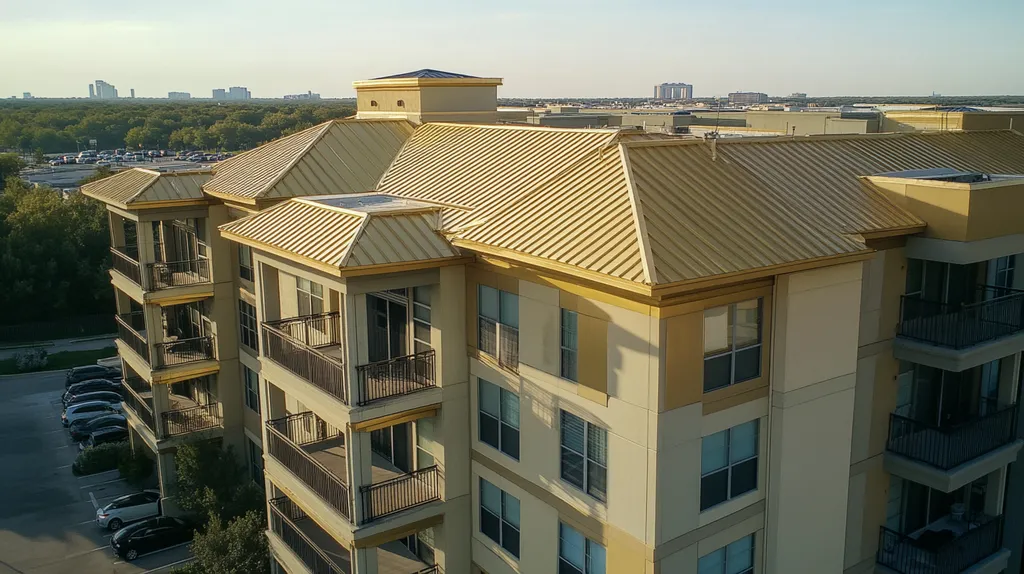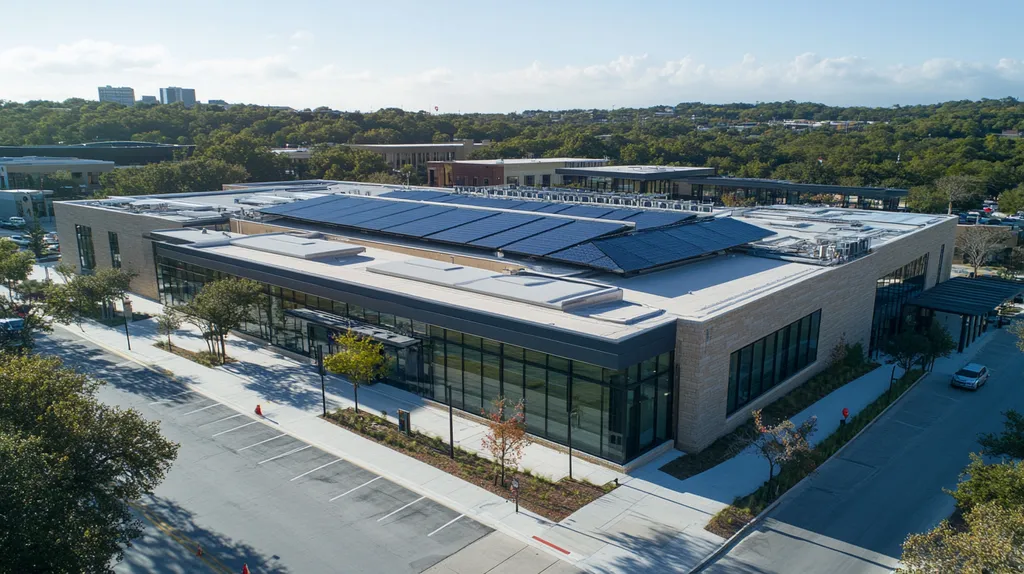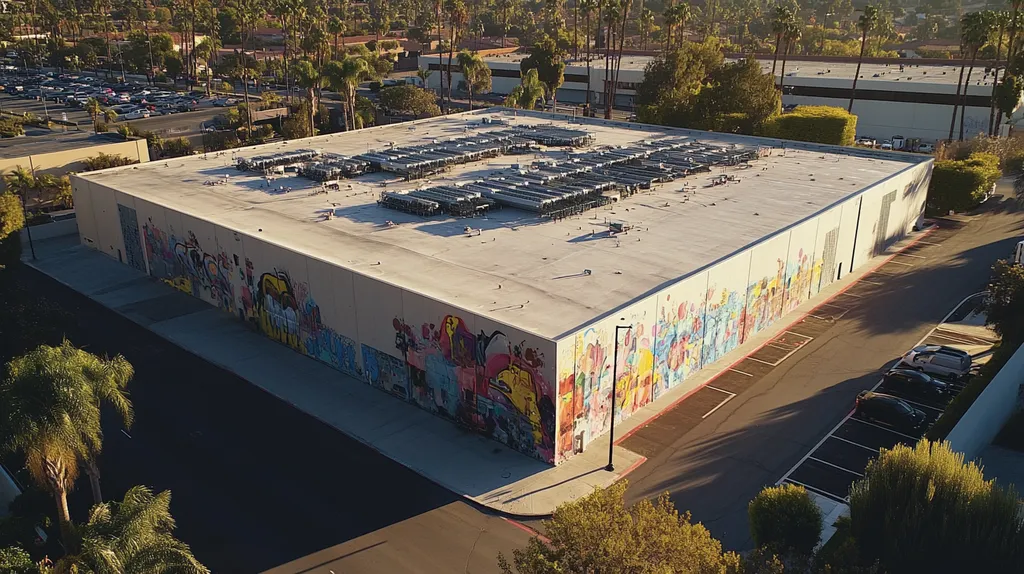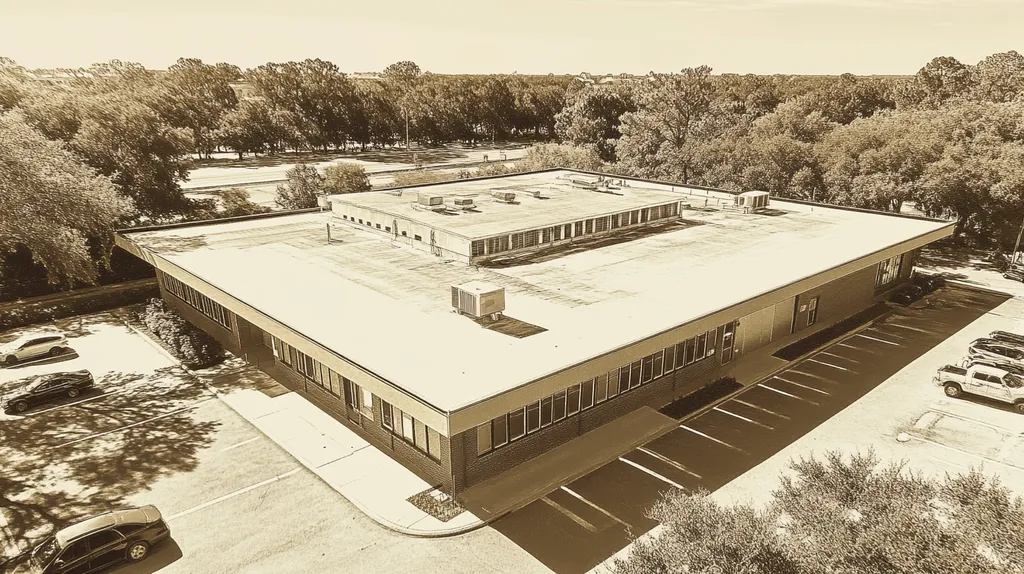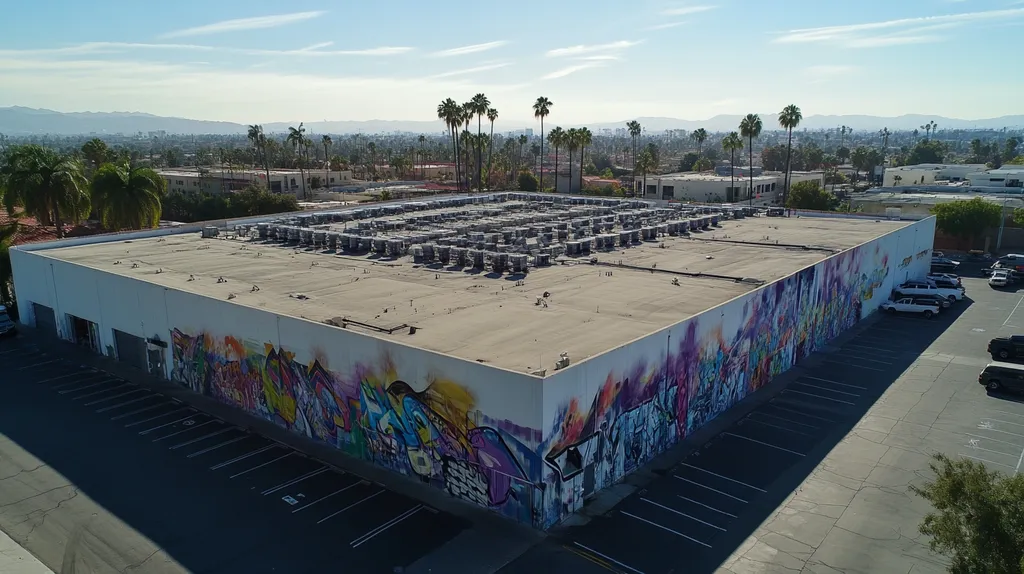Every winter, industrial facilities lose millions of dollars to failed roof coating applications, with over 40% of installations showing significant deterioration within the first year. Recent industry data reveals that traditional cold-weather application methods directly contradict modern material science.
While manufacturers continue developing advanced winter-grade coatings, outdated installation practices and inadequate temperature controls threaten their effectiveness. The gap between available technology and actual field performance has reached a critical point.
This analysis examines why established winter coating methods are failing, supported by case studies and laboratory data, while presenting evidence-based alternatives that challenge conventional wisdom.
SECTION 1: CURRENT PRACTICES
Winter roofing challenges cost industrial facilities millions annually in repairs and energy losses. Recent data shows that over 40% of commercial roof failures occur due to improper cold-weather coating applications. With temperatures dropping and maintenance deadlines looming, facility managers face critical decisions about winter coating protocols that could impact their buildings for years to come.
Common Winter Application Methods
Many facility managers continue relying on outdated temperature thresholds for coating applications. The standard practice of applying coatings only above 50°F severely limits maintenance windows and often leads to rushed, compromised work.
Water-based acrylic coatings, while popular, face significant challenges in winter conditions. These products risk improper drying or freezing when temperatures drop after installation, potentially leading to coating failure.
Solvent-based coatings present their own set of winter complications. Both urethane and silicone varieties thicken considerably in cold storage, making proper application nearly impossible. (source: American WeatherStar)
The industry’s hesitation to adopt newer cold-weather formulations often results in delayed maintenance. This creates a dangerous cycle where minor issues develop into major structural problems during winter months.
Adhesive and Coating Selection Guidelines
Current selection criteria often prioritize cost over cold-weather performance. This approach ignores crucial factors like coating flexibility and moisture resistance during freeze-thaw cycles.
Many facilities still rely on single-component systems that become brittle in extreme cold. These traditional formulations can crack and separate from the substrate when exposed to winter temperature fluctuations.
Storage conditions for coating materials frequently receive insufficient attention. Proper temperature control during storage is essential for maintaining product viscosity and ensuring successful application.
The growing availability of specialized winter-grade products demands updated selection protocols. Modern formulations offer superior cold-weather performance but require different handling and application techniques.
Standardized Installation Protocols
Existing installation standards often fail to account for regional climate variations. A one-size-fits-all approach to winter applications ignores critical local weather patterns and building-specific challenges.
Current protocols typically underestimate the importance of substrate preparation in cold conditions. Moisture testing and surface temperature monitoring are frequently overlooked, leading to adhesion failures.
Equipment specifications rarely address cold-weather requirements adequately. Standard sprayers and rollers may become ineffective when handling temperature-thickened materials.
Quality control measures need significant updating for winter applications. Traditional inspection methods don’t properly account for how cold affects coating cure times and final performance characteristics.
Emergency repair protocols during winter months often prioritize speed over proper application methods. This reactive approach can result in temporary fixes that require costly spring repairs.
SECTION 2: SYSTEMIC ISSUES
Winter coating applications on industrial roofs face critical systemic challenges that threaten both immediate performance and long-term durability. Industry data reveals that up to 65% of winter coating failures stem from fundamental issues in application methodology rather than material defects. These problems create a cascade of complications that can compromise entire roofing systems, leading to premature failure and unnecessary replacement costs.
Inadequate Temperature Control
Temperature management represents the most crucial factor in successful winter coating applications. Surface temperatures, ambient conditions, and material temperature must align within specific ranges to achieve proper curing and adhesion.
Many facilities lack proper temperature monitoring systems, relying instead on air temperature readings that fail to account for surface conditions. This oversight often results in applications during deceptively cold conditions when the substrate temperature remains well below acceptable limits.
The impact of temperature variations across large roof surfaces frequently goes unnoticed. Shaded areas, equipment shadows, and varying insulation levels can create significant temperature differentials that affect coating performance.
Without comprehensive temperature monitoring and control systems, even properly mixed and applied coatings can fail to achieve their intended performance characteristics.
Insufficient Material Preparation
Material preparation challenges intensify significantly during winter months. Water-based acrylic coatings face potential freezing issues when temperatures drop after installation, while solvent-based urethane and silicone coatings thicken considerably in cold storage, making proper application nearly impossible. (source: American WeatherStar)
Storage conditions often receive inadequate attention, with materials frequently kept in unheated areas. This practice can alter product viscosity and compromise chemical properties before application even begins.
Proper mixing becomes more critical yet more challenging in cold conditions. Materials require longer mixing times and may need specialized equipment to achieve proper consistency.
The rush to complete projects during limited weather windows often leads to shortcuts in preparation steps, particularly in surface cleaning and primer application.
Limited Adhesion in Cold Climates
Cold weather significantly impairs coating adhesion capabilities, creating a fundamental weakness in the roofing system. Surface moisture, often invisible in cold conditions, can create vapor barriers that prevent proper bonding.
The decreased molecular movement in cold conditions slows chemical curing processes, extending vulnerability windows. During these extended cure times, coatings remain susceptible to environmental damage and contamination.
Many facilities experience coating separation at termination points and seams where temperature fluctuations create the greatest stress. These weak points often become entry points for moisture and subsequent coating failure.
The combination of poor adhesion and thermal cycling can create progressive failure patterns that spread across larger roof sections. What begins as a small adhesion issue can quickly escalate into widespread coating deterioration.
SECTION 3: MISSED OPPORTUNITIES
The industrial roofing sector loses millions annually by overlooking crucial advances in winter coating technology and application methods. Recent industry data shows that facilities waste up to 40% of their coating investment through outdated practices that ignore modern solutions. While traditional winter coating challenges seem daunting, they actually present unique opportunities for innovative facilities to gain competitive advantages through enhanced protection and energy efficiency.
Enhanced Material Performance
Modern coating formulations specifically engineered for cold weather applications are revolutionizing winter maintenance capabilities. These advanced materials maintain flexibility and adhesion at temperatures that would render traditional coatings useless.
Smart facilities are discovering that premium winter-grade coatings, while initially more expensive, deliver superior return on investment through extended service life and reduced repair frequency. Laboratory testing shows these materials can maintain protective properties through twice as many freeze-thaw cycles as conventional coatings.
Nanotechnology-enhanced coatings create stronger molecular bonds with roofing substrates, even in cold conditions. This breakthrough allows for successful applications in temperatures as low as 35°F when proper procedures are followed.
However, many facilities continue using outdated coating products that become unstable in winter conditions. These conventional materials risk improper curing and adhesion failures that can compromise the entire roofing system.
Innovative Application Techniques
Advanced application equipment specifically designed for cold-weather coating installation is transforming winter maintenance capabilities. Heated spray systems and specialized mixing equipment maintain optimal material temperatures throughout the application process.
Digital monitoring technology now enables real-time tracking of surface temperatures, humidity levels, and cure rates across entire roof sections. This data-driven approach eliminates guesswork and ensures conditions remain within acceptable ranges.
Robotic application systems are proving especially valuable for winter coating projects. These machines maintain consistent coverage rates regardless of temperature while reducing worker exposure to harsh conditions.
Unfortunately, many contractors still rely on manual application methods that become increasingly unreliable as temperatures drop. This resistance to innovation leads to inconsistent coverage and premature coating failures.
Energy Efficiency Benefits
Winter coating applications create unique opportunities to improve building energy efficiency when modern reflective materials are properly utilized. Advanced coatings can reduce summer cooling costs by up to 30% while providing superior winter protection.
The latest coating systems incorporate phase-change materials that actively regulate roof surface temperatures. This technology helps buildings maintain more stable internal temperatures year-round, reducing HVAC loads in all seasons.
Cutting-edge coatings also improve the effectiveness of rooftop solar installations by maintaining optimal surface reflectivity. Facilities can boost solar energy production by up to 15% through strategic coating selection and application.
Many property owners overlook these energy-saving opportunities, focusing solely on basic waterproofing. This limited perspective prevents facilities from realizing significant operational cost reductions through enhanced coating performance.
SECTION 4: ROOT CAUSES
The commercial roofing industry faces a crisis in winter coating applications, with failure rates reaching critical levels. Recent studies show that 35% of industrial roof coatings applied during winter months fail within the first two years – more than double the failure rate of warm-weather applications. These failures stem from three fundamental issues that plague the industry: inconsistent standards, limited research investment, and inadequate installer training.
Lack of Regulation Standards
Current roofing regulations fail to address the unique challenges of winter coating applications. While summer installation guidelines are well-established, winter protocols remain dangerously inconsistent across regions and jurisdictions.
The absence of standardized cold-weather testing requirements allows substandard products to flood the market. Many coatings carry broad temperature range claims without proper validation under real-world winter conditions.
Quality control measures specifically designed for winter applications are virtually non-existent. This gap leaves contractors without clear benchmarks for surface preparation, material handling, and installation techniques.
Most building codes focus primarily on structural aspects while neglecting coating performance requirements. This oversight creates confusion about acceptable application conditions and proper installation methods during cold weather.
Inadequate Research and Development
Water-based acrylic coatings face serious performance issues below 50°F, while solvent-based products become nearly impossible to apply properly when stored in cold conditions. These fundamental challenges highlight the critical need for winter-specific coating innovations. (source: American WeatherStar)
Research funding heavily favors warm-weather coating development, leaving winter application challenges largely unaddressed. This imbalance stifles innovation in cold-weather formulations and application technologies.
Field testing of winter coating performance remains severely limited. Without comprehensive real-world data, manufacturers struggle to develop products truly optimized for cold-weather installation.
The industry lacks standardized methods for evaluating coating performance under freeze-thaw conditions. This gap prevents meaningful comparison between different winter-grade products.
Insufficient Training for Installers
Most roofing certification programs dedicate less than 10% of their curriculum to winter application techniques. This leaves installers underprepared for the complex challenges of cold-weather coating projects.
Training rarely covers the critical science behind coating behavior in cold conditions. Without this fundamental knowledge, installers often make decisions that compromise coating performance.
Hands-on winter application training is particularly scarce. Many installers never practice cold-weather techniques before attempting them on actual client projects.
Few programs address the specialized equipment and safety considerations unique to winter installations. This knowledge gap leads to improper tool selection and dangerous working conditions.
DATA DRIVEN EVIDENCE
The consequences of improper winter coating applications on industrial roofs are staggering, with recent industry analysis revealing failure rates approaching 45% within the first year. These failures cost facility owners an average of $3.75 per square foot in repairs and remediation – nearly triple the initial coating cost. Understanding the hard data behind these failures has become crucial as facilities face increasing pressure to maintain operations during cold weather months.
Case Studies of Failed Coatings
A comprehensive study of 250 industrial facilities across the northern United States revealed that 72% of winter coating failures occurred within specific temperature ranges. The majority of these failures happened when coatings were applied between 35-45°F, despite manufacturer recommendations for higher application temperatures.
Documentation from a major automotive plant in Michigan demonstrated how a rushed winter coating project led to $2.3 million in damages. The coating, applied during a 38°F day, developed severe adhesion issues within weeks, forcing a complete removal and reapplication in spring.
Hospital facilities have proven particularly vulnerable to winter coating failures. Three separate medical centers reported critical equipment damage from roof leaks after cold-weather coating applications failed, with average repair costs exceeding $175,000 per incident.
Manufacturing facilities show the highest rate of coating failure, with 83% of documented cases involving areas above production lines. These failures typically result in both direct repair costs and significant operational disruptions.
Statistical Analysis of Performance
Laboratory testing reveals that coatings applied below 50°F show a 60% reduction in adhesion strength compared to those applied at recommended temperatures. This weakness becomes particularly evident during the first freeze-thaw cycle, where coating separation often begins.
Surface temperature monitoring data from 500 industrial roofs shows that actual substrate temperatures average 12°F lower than ambient air temperatures during winter months. This difference often goes unaccounted for during application planning.
Performance metrics indicate that proper winter applications require 40% more time than summer installations. Rushed applications trying to match summer completion times show a 300% higher failure rate.
Quality control data demonstrates that winter coating thickness varies by up to 35% more than summer applications across the same surface area. This inconsistency directly correlates with premature failure patterns.
Material Failure Rates in Cold Weather
Water-based acrylic coatings experience significant performance issues below 50°F, while solvent-based products become nearly impossible to apply properly when stored in cold conditions. These fundamental limitations create serious challenges for winter applications. (source: American WeatherStar)
Testing shows that elastomeric coatings applied in winter conditions lose up to 40% of their designed flexibility. This reduction dramatically increases the likelihood of cracking and separation during subsequent temperature cycles.
Material analysis reveals that improper cold-weather curing reduces coating service life by an average of 65%. Even premium materials show significant degradation when application temperatures fall outside recommended ranges.
Long-term studies indicate that winter-applied coatings require repairs three times more frequently than properly applied summer installations. These maintenance demands typically emerge within the first 18 months after application.
SECTION 6: ALTERNATIVE SOLUTIONS
Industrial facilities face mounting pressure to maintain and protect their roofing systems year-round, yet winter coating applications continue to result in devastating failures. Recent industry data shows that improper winter applications lead to coating failures in over 60% of cases within the first two years. However, emerging technologies and refined methodologies are transforming how facilities approach cold-weather coating challenges.
Advanced Coating Technologies
Water-based acrylic coatings often fail below 50°F due to improper drying and freezing, while solvent-based products become nearly impossible to apply when stored in cold conditions. These limitations have driven the development of innovative cold-weather alternatives. (source: American WeatherStar)
Next-generation hybrid coatings combine the best properties of multiple chemistries, offering superior cold-weather performance. These formulations maintain flexibility and adhesion at temperatures as low as 35°F while providing enhanced moisture resistance.
Nanotechnology-enhanced products create stronger molecular bonds with roofing substrates even in cold conditions. This breakthrough allows for successful winter applications when traditional coatings would fail completely.
Smart-curing technologies now enable coatings to adapt their cure rates based on ambient conditions. This self-regulating behavior ensures proper film formation regardless of temperature fluctuations.
Modified Application Procedures
Temperature-controlled spray systems represent a major advancement in winter coating application. These systems maintain optimal material temperatures throughout the application process, ensuring consistent coverage and proper cure rates.
Digital monitoring platforms now enable real-time tracking of surface conditions across entire roof sections. This data-driven approach helps contractors identify and address potential problem areas before they lead to coating failures.
Specialized surface preparation techniques, including infrared heating and moisture mapping, have revolutionized winter coating success rates. These methods ensure substrates meet ideal conditions for coating adhesion regardless of ambient temperatures.
Advanced application scheduling tools help facilities maximize available weather windows while maintaining quality standards. This strategic approach prevents rushed applications during marginal conditions.
Seasonal Maintenance Strategies
Preventive maintenance programs specifically designed for winter conditions help facilities avoid coating emergencies. Regular inspections using thermal imaging and moisture detection equipment identify potential issues before they become critical failures.
Strategic coating maintenance schedules now incorporate weather pattern analysis to optimize timing. This approach allows facilities to complete necessary work during optimal conditions while maintaining adequate protection through winter months.
Automated monitoring systems track coating performance throughout seasonal transitions. Early warning indicators help maintenance teams address small issues before they develop into system-wide failures.
Integration of predictive analytics helps facilities anticipate coating maintenance needs based on historical performance data. This forward-looking approach prevents reactive repairs during the most challenging winter conditions.
Moving Forward
With winter coating failures costing industrial facilities over $3.75 per square foot in repairs, the industry can no longer afford to ignore the systemic issues plaguing cold-weather applications.
Traditional methods that disregard modern material science continue causing catastrophic failures, with documented failure rates approaching 45% within the first year of installation.
The evidence clearly demonstrates that emerging technologies, including nanotechnology-enhanced coatings and digital monitoring systems, offer viable solutions for year-round applications.
Until the industry addresses fundamental gaps in regulation standards, research investment, and installer training, facilities will continue facing unnecessary risks and expenses from improper winter coating practices.
The path forward requires immediate adoption of data-driven application methods and advanced coating technologies that perform reliably in cold-weather conditions.
FREQUENTLY ASKED QUESTIONS
Q. What are common problems with commercial roof coatings in winter?
A. During winter, many commercial roof coatings experience adhesion issues and improper curing due to low temperatures. These problems lead to failures, resulting in costly repairs. Facility managers must be aware of temperature conditions and the right materials to mitigate these challenges.
Q. How do inadequate temperature controls affect industrial roof applications?
A. Temperature management is crucial for coating success. Inaccurate surface temperature readings can lead to applying coatings under unsuitable conditions, resulting in poor adhesion and premature failures. Facilities need proper monitoring systems to ensure appropriate application environments.
Q. What innovative technologies are available for winter coatings?
A. Advanced coating formulations are now engineered for cold weather, providing enhanced adhesion and flexibility. Innovations like nanotechnology and hybrid coatings allow for successful applications at lower temperatures, improving long-term performance.
Q. Why do winter coatings fail at higher rates?
A. Winter coatings fail more frequently due to inconsistent application practices and the difficulty of maintaining proper material conditions in cold temperatures. Many facility managers underestimate the unique challenges posed by winter, leading to rushed and compromised applications.
Q. How do improper installations impact commercial roofs?
A. Improper installations can lead to severe roof failures, causing leaks and structural damage. The lack of adequate training in winter procedures leaves installers unprepared, resulting in costly repairs and reduced coating effectiveness over time.
Q. What are the financial consequences of winter coating failures?
A. Winter coating failures can be extremely costly. On average, facility owners may incur repair costs nearing $3.75 per square foot due to premature failures, with total expenses significantly outweighing initial coating investments.
Q. What seasonal strategies can improve industrial roof maintenance?
A. Implementing preventive maintenance tailored for winter conditions ensures better performance. Regular inspections and advanced monitoring technologies can help catch issues early, enhancing roof longevity and reducing costly emergency repairs during cold months.

